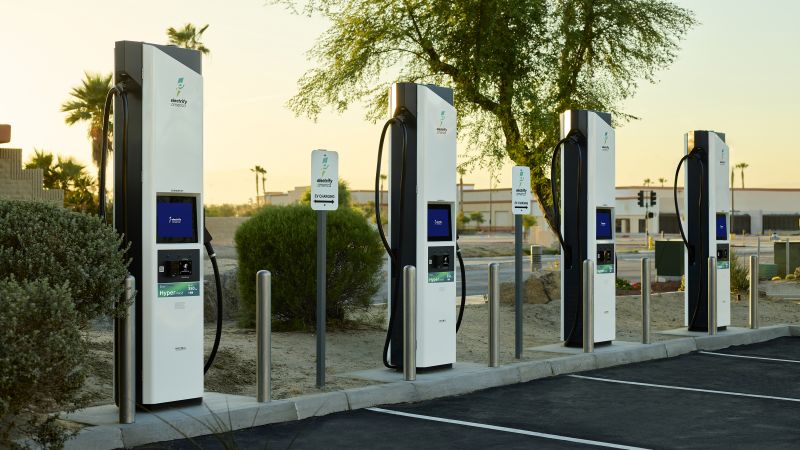A CNN reporter spent more than two hours waiting for EV chargers — thanks to “ill-mannered charger hogs who don’t respect EV etiquette.”
[T]o protect batteries from damage, charging speeds slow way down once batteries get beyond 80% full. In fact, it can take as long, or even longer, to go from 80% charged to completely full than to reach 80%. Meanwhile, lines of electric vehicles wait behind almost-full cars. I was waiting behind people with batteries that were 92%, 94% and even 97% full, as I could see on the charger screens. Still, they stayed there. I made my own situation worse by giving up on one location and going to another with more chargers, but there were even more EVs waiting there.
Given that a lack of public charging is turning many consumers off to EVs, according to multiple surveys, this is a major issue. Both Electrify America and EVgo said they are rapidly expanding their networks to, as EVgo’s Rafalson put it, “skate ahead of the puck,” trying to make sure there are enough chargers to meet future demand… “I think what you’re seeing is demand for public fast charging is really skyrocketing,” said Sara Rafalson, executive vice president for policy at EV charging company EVgo, “and I would say we’ve been really at an inflection point in the last year, year and a half, with demand…”
Electrify America, one of America’s biggest charging companies, is experimenting with a solution to the problem of charger hogs who can make it slow and unpleasant to travel in an EV. At 10 of the busiest EV fast charging stations in California, Electrify America has enacted a strict limit. Once a car’s batteries are 85% charged, charging will automatically stop and the driver will be told to unplug and leave or face additional 40-cent-per-minute “idle time” fees for taking the space. It’s similar to something Tesla vehicles do automatically. When a Tesla car, truck or SUV plugs into a particularly heavily-used Supercharger station, the vehicle itself may automatically limit charging to just 80% “to reduce congestion,” according to Tesla’s on-line Supercharger Support web page.
In that case, though, the user can still override the limit using the vehicle’s touchscreen. There will be no getting around Electrify America’s limit.
Electrify America’s president points out an EV driver could need a full charge (if they’re travelling somewhere with fewer charges) — or if they’re driving an EV with a relatively short range. So the article notse that some EV charging companies "have experimented with plans that charge different amounts of money at different times to give drivers incentives to fill their batteries at less busy hours…
“For the time being, let’s just hope that EV drivers who don’t really need to fill all the way up will learn to be more considerate.”



Options:
Build more chargers
Raise the price
Charge for time at the charger, not watt-hours delivered
Tell EV owners to blame each other
Three of these will work. One of them won’t.
2 of these have me shop around for a better charger.
There’s a DC charger near me that charges triple the regular rate that other chargers charge and 5 times the rate for electricity from the power company. Then after an hour it charges $30/hr on top of the triple rate charge. It also only delivers a top rate of 50kW so having to go from 10-80% is a real possibility for going past an hour change time. That charger is never used.
What’s hilarious is that there’s a free 50kW DC charger right across the street.
I like the option presented in the article: shut it off after 80%.
I’m very against congestion pricing in general since I’m out when I’m out, and need whatever when I need it, and don’t want to have to factor in whether it’s busy into my budgeting.
So you get to charge your expensive Tesla with a giant battery for hours and block the charger and eat up 80+ Kilowatt-hours, but I plug in my base model Nissan Leaf and get cut off at 45 kWh?
That’s the edge-case specifically mentioned, but yeah. The solution there, which should accommodate everyone, would be slower level 1 chargers off to the side to top up the rest of the way and freeing up the faster chargers for others.
Many of the chargers around me in Canada (Flo) charge by the minute. They’re not often full, but I do think it discourages idle time. I think a system that can detect high demand (all chargers in use) and activate demand pricing, which is significantly higher, for any vehicles over 80% would deter people essentially parking at fast chargers.